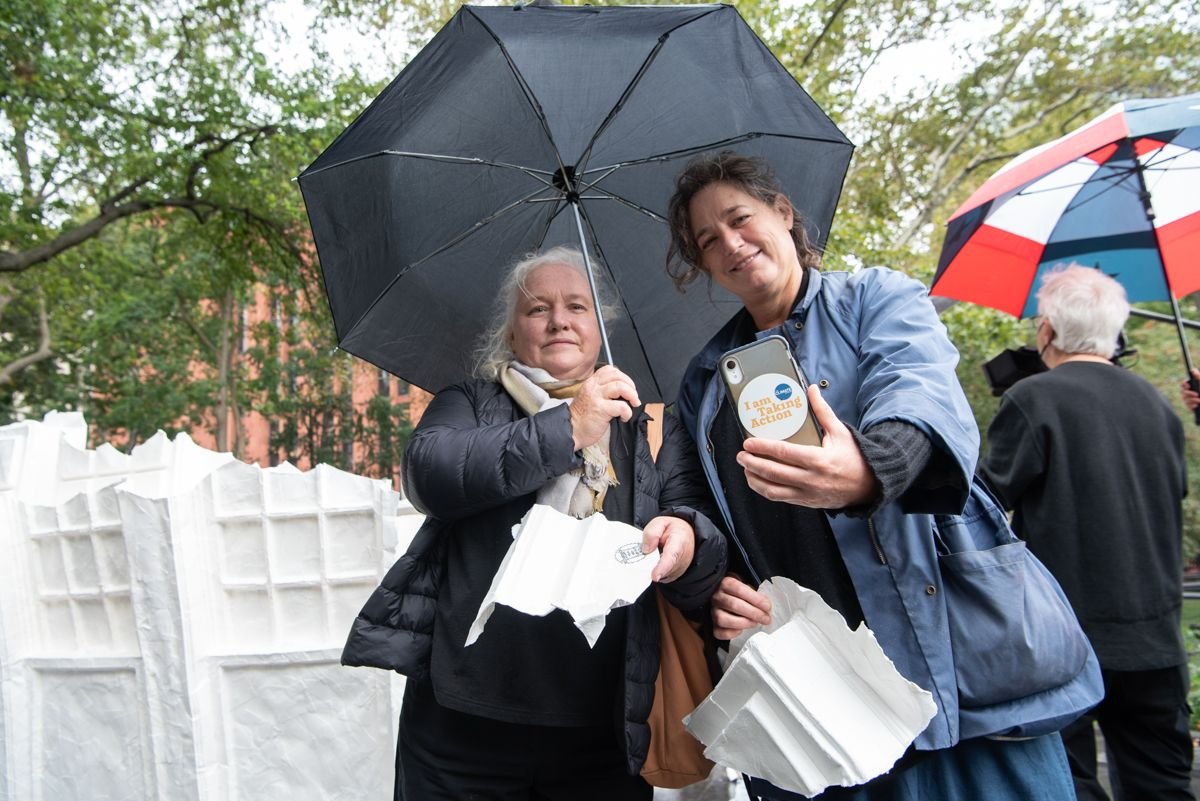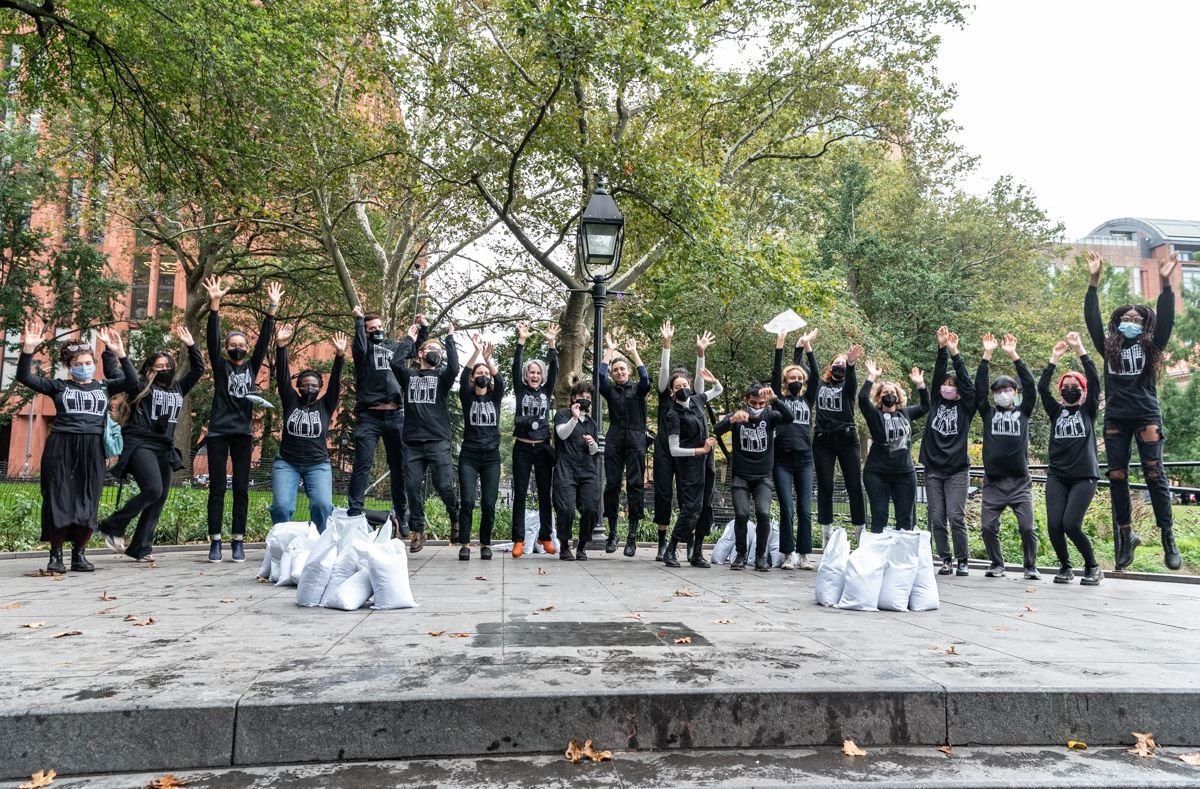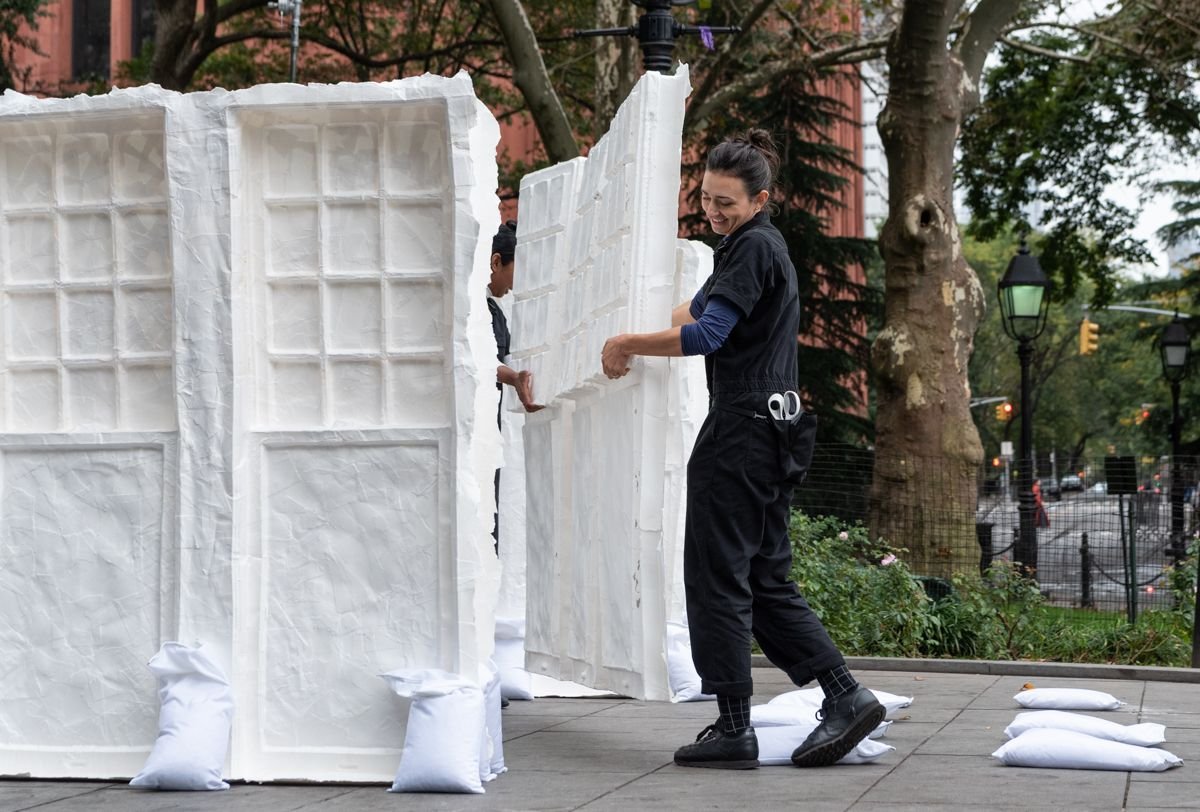The Climate Museum - Climate Change advocacy during the Critical Decade
By Hasmukh Chand, Sydney Australia
World leaders gathered recently in Glasgow as part of COP26 to negotiate international commitments and lay a road-map for rapid and deep cuts to carbon emissions by 2030. Many, such as US President Joe Biden, have referred to the next ten years as the ‘critical decade’, our last best chance for creating a safer and healthier planet.[1] International negotiations are often beyond the sphere of influence of many individuals. Add to this the scale of the climate challenge and many of us end up feeling isolated and disempowered.
Gabriela Salazar and daughter, ‘Low Relief for High Water’, Washington Square Park, 10 October 2021. Photo: Sari Goodfriend
It is for this very reason that The Climate Museum was established - the first museum dedicated to climate change in the United States -with the aim to ‘create a culture for action on climate change’. Broadly speaking, The Climate Museum represents a growing shift among cultural institutions to help their visitors understand the realities of the climate crisis, encourage them to connect deeply with the natural world and find ways to help protect it. One of the ways that The Climate Museum seeks to achieve action on climate change is by working with independent artists to curate thought-provoking exhibitions such as “Low Relief for High Water” and “Beyond Lies”.
Low Relief for High Water was a participatory art installation by artist Gabriela Salazar, commissioned by The Climate Museum to celebrate the 50th Anniversary of World Earth Day, April 2020. Covid postponed the installation until 10 October 2021. In this work Salazar wanted to reflect on the tenuousness of ‘home’ in a climate changing world and how we care for ourselves and each other as we become more vulnerable. In a documentary piece on the installation, Salazar talks about the thoughts underlying it:
Gabriela Salazar (artist) and Miranda Massie (Director, The Climate Museum), ‘Low Relief for High Water’, Washington Square Park, New York, 10 October 2021. Photo: Sari Goodfriend.
‘For me, the built environment that we’ve created; New York City in particular, but all this work we’ve done as a human race to create a space for ourselves and make a home - and thinking about how climate change is going to affect New York City and destroy so much of that...it feels like a very solid, permanent kind of place but in reality there is a lot of permeability and vulnerability.’[2]
‘I am taking climate action’; visitors to ‘Low Relief for High Water’. Photo: Sari Goodfriend.
Salazar made casts of windows in her own home using water-soluble paper, creating fragile, translucent panels. Installed in Washington Square Park in central New York, Salazar cut out chunks from the wall panels with scissors and embossed them with the date and time. A large number of visitors, braving rain, were invited to take these pieces with them, ‘giving people’, as Salazar noted, ‘responsibility for that intimate fragment.’[3] Visitors were also invited to take part in a direct action activity, writing postcards to Washington, and had the opportunity to stop and talk through their feelings with a climate psychologist. The work highlit the collective vulnerabilities that people have to climate change and the need for building community resilience through connections to one another. As The Climate Museum web page about the work states: ‘If home is a place where we are supposed to feel safe, how will we respond when it is our home that needs saving?’[4] One of the inspirations for ‘Low Relief for High Water’ came from two severe flooding events in New York. Hurricane Ida (in September 2021) for example brought flash flooding and resulted in multiple casualties and forced New York Mayor Bill de Blasio to declare a state of emergency.[5] This difficult period was of course exacerbated by the global pandemic.
Similarly, The Climate Museum partnered with artist Mona Chalabi to create the ‘Beyond Lies’ art exhibition to help shed light on the decades long campaign of “disinformation” by the fossil fuel industry that has delayed action and caused “mayhem” when it comes to strong action on climate change.[6] The fossil fuel industries' role in both regards have been on full display at COP26, with recent analysis by Global Witness finding that there are over 500 delegates from the fossil fuel industry present at the global climate change negotiations (if the fossil fuel delegates were a country, it would be the largest negotiating bloc present, with Brazil being second). The fossil fuel delegates outnumber UN officials at COP26 by two to one.
The ‘Low Relief for High Water’ team, The Climate Museum. Photo: Sari Goodfriend.
For those wishing to learn more about how cultural institutions can get involved in climate change advocacy, there are a number of wonderful resources available to help do so. They include;
Checking out the resources and programs at The Climate Museum
Listening to the recording of “Culture: The Missing Link” webinar as part of COP26
Exhibitions and events that took place at COP26 “Culture at COP”
Explore the virtual resources that were part of the Green Zone Programme for COP
Gabriela Salazar (artist), ‘Low Relief for High Water’, Washington Square Park, New York, 10 October 2021. Photo: Sari Goodfriend.
References:
From ‘Gabriela Salazar, Low relief for High Water’, film by Micah Fink and Tom Hurwitz, 6:50; 27 March 2021, https://www.youtube.com/watch?v=cKuXXRgE-IQ .
Gabriela Salazar, in ‘Gabriela Salazar, Low relief for High Water’, film by Micah Fink and Tom Hurwitz, 6:50; 27 March 2021, https://www.youtube.com/watch?v=cKuXXRgE-IQ .
https://climatemuseum.org/low-relief-for-high-water
“Flash Flooding from Hurricane Ida…’, 12 Sept 2021, ABC News, https://www.abc.net.au/news/2021-09-02/new-york-city-flash-flooding-emergency-hurricane-ida/100428984





